Top 10 Articles of 2020
Remarque : cette page web n’est actuellement disponible qu’en anglais.

Throughout the past year, the BCRC published two or three times a week on our blog. Most articles offer science-based perspectives on issues impacting Canada’s beef value supply chain, from cow-calf production and feedlot through to retail. Some of the articles feature new research, while others focus on beef production tips and practical insights.
Below is a list of the BCRC’s Top 10 blog posts of the year (plus a bonus post, because it’s 2020 and we all deserve a little something extra).
What were some of your favourite articles from the year? Which posts do you think should have made the list? Comment below and tell us what you would like to see in 2021.

Bonus: Eleven Ways to Avoid Feed Waste this Winter
Whether producers feed silage or dry hay to their herds, feed is typically the largest cost for most beef operations. Even small efforts to reduce waste during harvest, storage, and feeding can result in feed costs savings.
10. The Cost Benefit of Using Vaccines in Beef Cattle
Working with your veterinarian to develop a vaccination protocol for diseases such as BVD and BRD, can optimize profitability and prevent production losses on your farm.
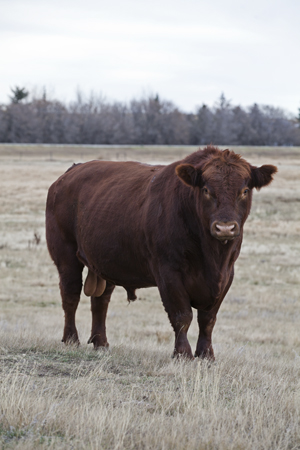
9. Buying Power: Bull Selection to Improve your Bottom Line
Selecting your next herd sire may seem like a daunting task but using on-farm records to help identify your goals, and assessing the short- and long-term costs and benefits of investing in herd bulls can help producers focus their search.
8. Winter Feed Cost Comparison Calculator – Regional Trends and Opportunities
Winter feed costs vary and often depend on regional conditions and availability. Feed testing is an important first step to understanding whether you can meet the nutritional needs of your cattle. The BCRC’s Winter Feed Cost Comparison Calculator tool can also help producers compare costs on feeds available to them.
7. Think you Have a Closed Herd? Think Again.
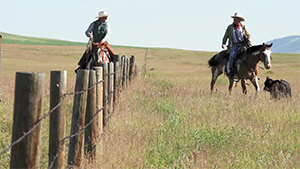
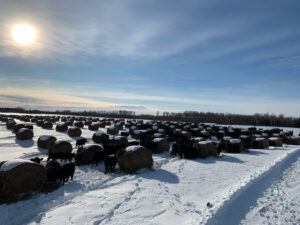
Beef farmers often think they have a “closed herd” but in most cases, it’s not true. A bull or cow can jump a fence, wildlife can wander through your farm, or perhaps you’ve hosted a branding or cattle event where attendees didn’t change or disinfect their boots. With open herds, common sense protocols can help producers keep their herds healthy and protected.
6. Bale Grazing Checks the Boxes for Three Canadian Producers
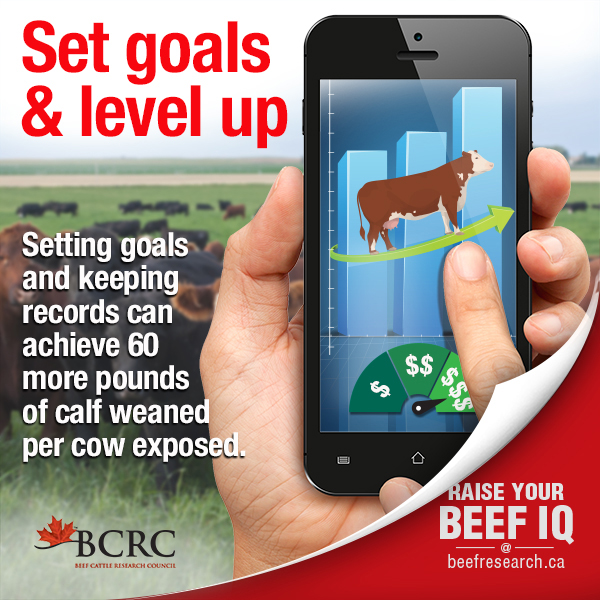
Many producers have started using bale grazing as a way to feed their cows extensively, to reduce their workload, decrease costs, and improve the health of their pastures. Producers from Nova Scotia, Manitoba, and Saskatchewan share their top tips on how and why they implement bale grazing on their farms.
5. Record Keeping and Benchmarking
Keeping cattle records may be time consuming but developing on-farm benchmarks can pay dividends and help producers understand strengths and weaknesses. The BCRC developed record keeping and benchmarking resources for producers who are new to record keeping (Level 1), who want to make better use of existing records (Level 2), and who are looking for higher level analysis and application (Level 3).
4. Carrying or Grazing Capacity
Balancing forage supply and demand is key to managing pastures, but it can be challenging to determine how many cattle a field will support, especially if the pasture is newly acquired. The BCRC has a new Carrying Capacity Calculator with two methods to help farmers determine an ideal stocking rate.
3. Silage is Top Choice for these Three Beef Producers
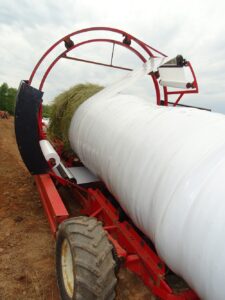
Silage can be a good option for producers looking to produce more feed on fewer acres or wanting to harvest forage in wet or variable weather. There is a learning curve, however, and silage also involves additional feeding and harvesting infrastructure and equipment. Learn how producers from Saskatchewan, Manitoba, and New Brunswick have incorporated silage into their operations.
2. Top Tips for a Smooth Calving Season
The most important day of a calf’s life is the first one. Most calves arrive alive and healthy but occasionally farmers must intervene, provide supplemental colostrum, or even resuscitate a calf. Preventative management is best, however these timely strategies can be used to optimize the health and wellbeing of calves hitting the ground.
1. Hooves not Harrows – Harnessing Cow Power to Rejuvenate Forages
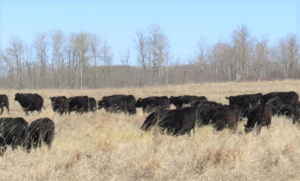
There are several methods to rejuvenate or renovate older forage stands, and strategies can range from being mechanical and costly to simple and low cost. This Manitoba operation uses their cattle herd to improve older pastures by managing grazing and using stockpiled pasture to re-seed forages. Mature seeds pass through the cow or are trampled into the ground, improving legume populations and increasing forage production over time.
Which posts do you think should have made the list? Comment below and tell us what you would like to see in 2021.
Click here to subscribe to the BCRC Blog and receive email notifications when new content is posted.
The sharing or reprinting of BCRC Blog articles is welcome and encouraged. Please provide acknowledgement to the Beef Cattle Research Council, list the website address, www.BeefResearch.ca, and let us know you chose to share the article by emailing us at info@beefresearch.ca.
We welcome your questions, comments and suggestions. Contact us directly or generate public discussion by posting your thoughts below.